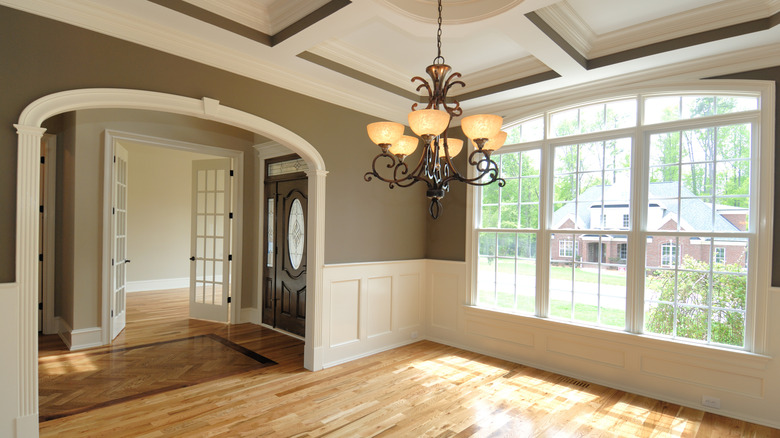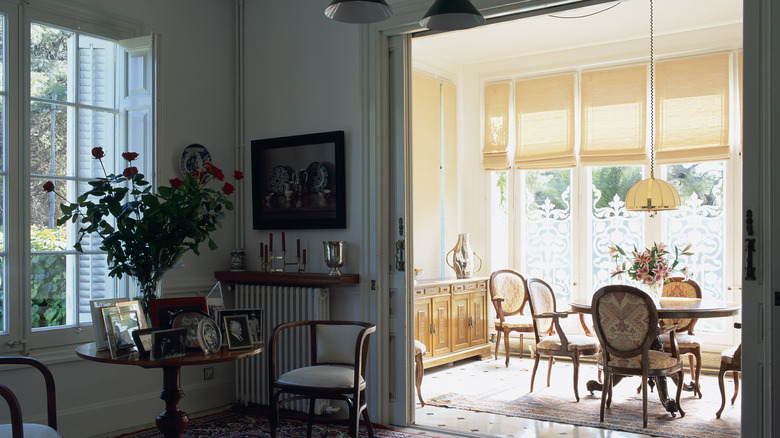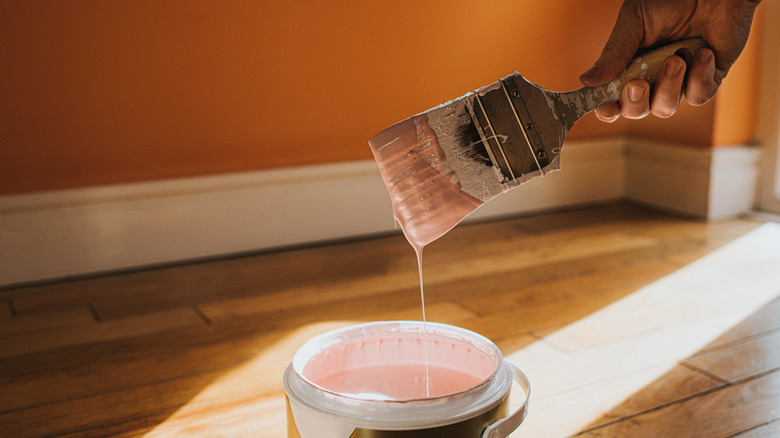Designers Are Ditching Outdated White Trim, Here's What They're Doing Instead
White trim has been a staple of interior design for so long that many people wouldn't even think of considering an alternative. While white trim adds a freshness to a room, separating the walls from the floor with a crisp band, designers are advising homeowners to deviate from what's expected and embrace a new trend — monochromatic trim and walls.
To achieve a bold, seamless look, adventurous homeowners are bringing their wall paint up to the ceiling and down to the floor, covering everything from crown molding to wainscoting to baseboards, in the same color, be that white or forest green. This might seem overwhelming to some and like a big commitment to others, but painting the walls and trim the same colors has design benefits, creating a cohesive aesthetic for the room. Often, the monochromatic trim and walls trend entails bringing that same paint color to the room's doors, making them blend in with the rest of the wall. If you're interested in this style, consider some clever tips and tricks you need when painting your doors.
From boring to dramatic with the stroke of a brush
A dusky blue wall is an elegant addition to a bedroom, making the room feel cozy and restful, but white trim stands out too starkly against such a dark color, dragging the eye down to the baseboards and away from the wall you — or your painters — worked so hard on. By painting walls and trim the same color, you add drama to the room, enhancing the color's impact rather than breaking it up. Painting all vertical surfaces the same color also elongates them, creating the illusion of taller ceilings.
If there are any built in aspects to the room, such as bookcases or cabinets, painting them the same color as the wall, keeps them from looking bulky and helps them blend in. A solid backdrop also makes your art, books, and fixtures stand out, allowing you the opportunity to further express yourself with additional wall decorations or creative door handles. As an added benefit, when you tackle painting the room, you don't have to waste as much time painstakingly applying masking tape around the baseboards and crown molding, since they're going to end up the same color, anyway. When it comes to your floors, however, you can keep your space mess-free with painter's masking film.
Things to keep in mind when painting
Though using the same color for the trim and walls does simplify the painting process, there are still inconvenient aspects. While the color might be the same, you will need two separate paint finishes for the trim and the walls, as they are not made of the same materials. Typically, interior walls are painted with a flat or matte finish, while woodwork is painted with a semi or high gloss finish that can stand up to wear and tear.
If your woodwork was previously painted with a durable oil-based paint, you will have to continue using an oil-based paint for those surfaces to ensure the new coats adhere properly, but oil paint is not typically used on walls, which take water-based paint best. You'll still have to invest in two separate paints, but at least you only have to worry about picking one perfect shade of paint. There may be challenges to painting the walls and trim the same shade, but the end result is too stunning to pass up.


